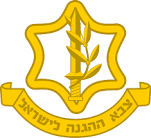
Tel Aviv. Israeli defence forces (IDF) announced recently that it would hold a “war month” in the first half of 2022 lasting four weeks – the first General Staff exercise of its kind. The exercise, which will include regular army and reserve forces on an especially large scale, is designed to evaluate the army’s forces during the course of a long, consecutive, challenging, and life-like exercise in order to enhance readiness and fitness for war.
The exercise is initiated by the Israeli defence forces chief of staff, Lt General Aviv Kochavi.
Kochavi’s concept includes three main efforts in the use of force, all of which are to be practiced during the “war month”: a multi-dimensional maneuver for enemy territory, powerful attacks with firepower and cyberattacks, and a strong multidimensional defense, designed, as stated in an article by Maj. Gen. Herzi Halevi, “so that the offensive achievements are not offset by the enemy’s achievements in our territory.” All of these efforts will be made simultaneously in order to expose the enemy and destroy it quickly.
In an analysis prepared by Gal Perl Finkel, a researcher in the Israeli institute for national security studies (INSS) in Israel, implementing the approach requires essential operational conditions, including intelligence superiority, air superiority, digital superiority, naval superiority, a policy that permits the effective use of firepower in the populated areas where the enemy hides and defends itself in the midst of the civilian population, the resilience of the home front during weeks of warfare, and operational continuity.
“Key ideas in the approach are multi-branch efforts and multi-dimensionality, and according to the concept, all of the IDF’s capabilities in all of the dimensions will be utilized in order to execute a more effective and deadlier maneuver and defense. For example, as US military theoretician and retired armored corps officer Douglas McGregor said, sensors mounted on fighter jets and remote unmanned aerial vehicles (UAVs) flying above the battlefield are likely to gather intelligence about the enemy in a specific location, which will be transmitted to the land or naval force, and actually to anyone can do the best job of destroying it. At the same time, the force utilizing electronic warfare can disrupt the enemy’s drone operation designed to attack the maneuvering land force, and can provide that force with protection.”
According to the researcher, the new elements shaping the modern battlefield, including advanced technology and the ability to integrate and connect branches and forces more effectively, do not eliminate the need for maneuvering forces to conduct land-based warfare in enemy territory, sometimes at short range. The enemy is able to adjust to the firepower directed against it; prepare in advance, both above and below the surface; and continue fighting. As Patton said, flexible and fast maneuvering forces are therefore needed that will be able to find the enemy, expose it to firepower, and strike it directly in order to reduce the barrages fired at the Israel home front.
“The planned IDF exercise will therefore include a scenario of an integrated multi-front campaign in the north and south, according to the up-to-date and gravest reference scenarios, as well as testing all of the necessary capabilities: the transition from peacetime to emergency, inter-organizational coordination, management of the home front and civilian assistance, use of firepower, maneuver in a built-up area, and approach to a civilian population in enemy territory. One key challenge for the IDF is conducting a large-scale maneuver at the front and deep in enemy territory, based on general staff capabilities and activity of special forces.”
-The writer is an International Roving Correspondent of the publication








